OnePlus 8 Pro Review
OnePlus 8 Pro Review
Can OnePlus finally tick all the boxes?
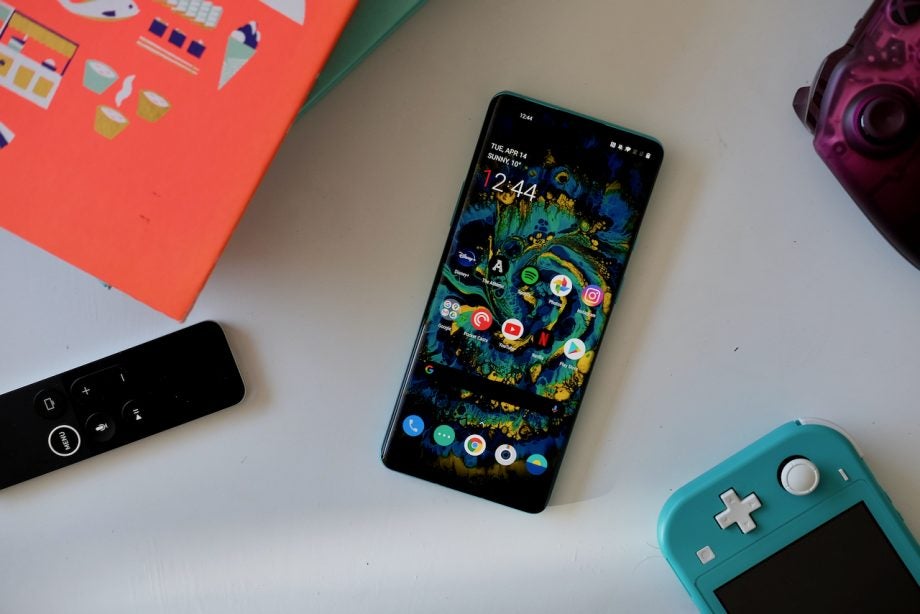
Verdict
I wish it was smaller; ditched the curved screen and was a little more comfortable to hold. But this still remains a great, big Android phone.
Pros
- Great screen
- Seriously powerful
- Improved cameras
- Finally has wireless charging
Cons
- Large size and overly curved screen make it uncomfortable to hold and use without a case
- Colour filter camera is utterly pointless
Key Specifications
- Review Price: £799
- 6.7-inch 120Hz OLED
- Snapdragon 865, 8 or 12GB RAM
- 4 x rear camera inc. 2 x 48MP sensors
- 4510mAh battery, Warp Charge 30 and Qi
- Android 10
- IP68
After much hype, mostly from OnePlus itself, the OnePlus 8 Pro is here with one of the best screens you’ll find on an Android phone.
OnePlus phones used to set themselves apart from the Samsungs and the Apples by offering top-end specs at prices that weren’t so hard on the wallet. While that’s not so much the case anymore, the OnePlus 8 Pro is still very good value at £799 for the 8GB/128GB model and £899 for the 12GB/256GB variant.
DEAL: OnePlus 8 Pro – Save £200, now £699 at Amazon
Those prices mean this 5G phone is cheaper than the Galaxy S20 Plus (£999) and the Huawei P40 Pro (£899) while coming in at the same price as the 4G Galaxy S20.
For that price, you’re getting a lot for your money, and the OnePlus 8 Pro is a very good Android phone with a lovely display.
Related: OnePlus 8 Pro vs OnePlus 8
Screen – OnePlus 8 Pro screen is stunning, with one exception
While many phones are hyped on the strength of their camera array, the OnePlus 8 Pro feels like it’s selling itself on its display. And after using the phone for the past week, it’s not hard to see why. Technically, this is a stunning display, though whether you’ll enjoy using it is another matter.
Unlike the Galaxy S20 series, this is a 120Hz OLED display that can run at that high, very smooth refresh rate even when the screen is maxing out its quad-HD+ resolution. The smoothness, paired with the sheer sharpness all those pixels affords, makes this a glorious display. It’s seriously bright too – OnePlus claims a peak of 1300 nits and it certainly matches up to the Galaxy S20 – making it easy to use even in harsh sunlight.
Of course, there’s support for HDR 10+ though you will have to wait for apps like Netflix to support the OnePlus 8 Pro for that to work.
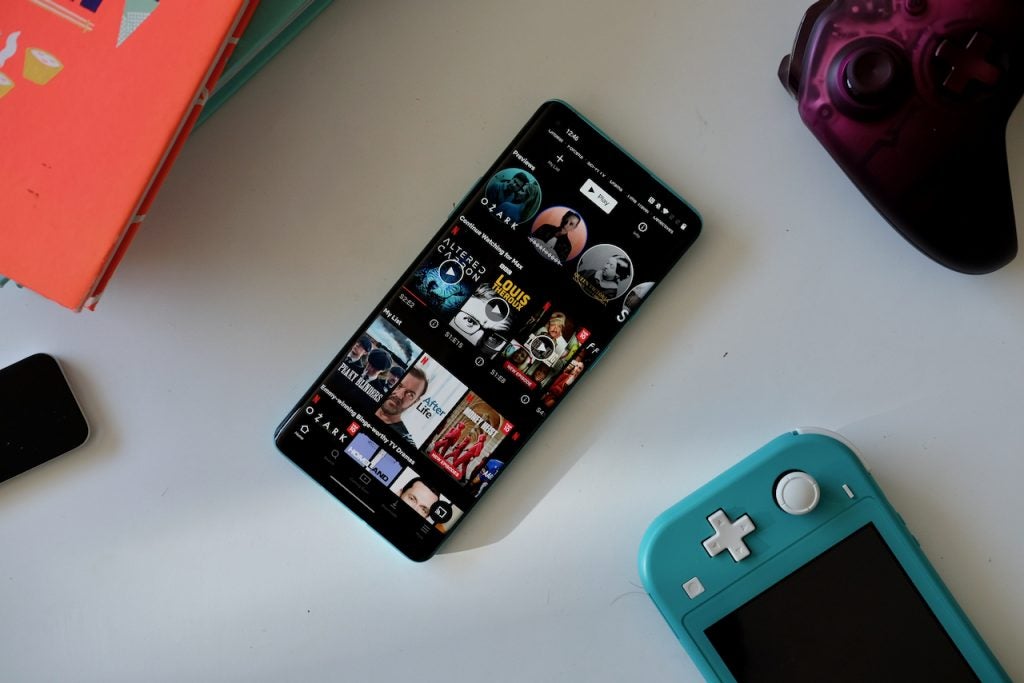
While some other brands, notably Samsung, have reduced the amount of screen customisations options, OnePlus phones still have plenty of ways to tweak to display to your personal preferences. You can choose between Vivid, Natural and Advanced; the latter of which lets you choose specific colour profiles like sRGB, P3 (my personal favourite) and OLED wide gamut.
There are also a few other aspects of this display that warrant a mention, even if they certainly won’t appeal to everyone. One such feature is motion graphics smoothing, a feature you might be familiar with if you have a relatively recent high-end television. This forces content from a bunch of supported apps – Netflix, YouTube etc. – to match the 120Hz refresh rate. This is controversial on TVs for the ‘soap opera’ effect it gives, and it’s similar here: it just makes stuff look unnatural and odd. I’m also not convinced it works very well: sometimes the effect is obvious, then a second later it’ll disappear. Thankfully you can turn it off. You’ll also find a mode that turns on a faux-HDR mode to boost colours and contrast for SDR content – this is more of a success, but the results are limited.
Related: Best OnePlus 8 Pro Deals
Whether those added features work or not is beside the point, from a technical standpoint, this is a fantastic display that ticks pretty much every box I look for.
There’s an issue I have with the screen as a whole: it’s far too curved for such a large phone, making it hard to hold comfortably. I am always accidentally pressing the sides, making the phone scroll or causing random apps to open. Maybe this could be fixed if some improved accidental touch rejection is added in the software, but at the minute the best way around it is to use a case.
Samsung pretty much killed its curved screens this year, and they’re all the better for it, but with the OnePlus 8 Pro that displays feels more curved than with the 7 Pro and it’s a shame. I think that while curved screens look good, they’re just not fun to use.
Related: Check out our in-depth OnePlus 8 review
Design – A minor update to the OnePlus formula
While 2019 heralded a few unique approaches to phone design, 2020 has reversed many of these decisions. The OnePlus 8 Pro ditches the clever motorised pop-up camera from its predecessor for a small cut-out camera in the corner of the screen. While this move doesn’t give you that glorious complete screen you had before, it does allow this to be the first OnePlus phone with a proper IP rating. I guess OnePlus is tired of having to field questions about why its expensive phone lacked one of the most common flagship features.
My review unit is in this ‘Glacial Green’ hue, and it’s the one interesting thing about this phone’s design. I really do love it, but then I have become enamoured with this trend of green tech. I appreciate the matte finish too, as it means you won’t have a load of grubby fingerprints covering the phone’s back. There’s a more glossy grey version available also.
Like the OnePlus 7 Pro and 7T Pro before it, the 8 is quite sharp. Due to the overly curved display, there isn’t much rim to grip on to. I’ve been using one of the OnePlus Bumper cases for most of the review period, and this really helps the phone feel a lot more pleasant to hold.
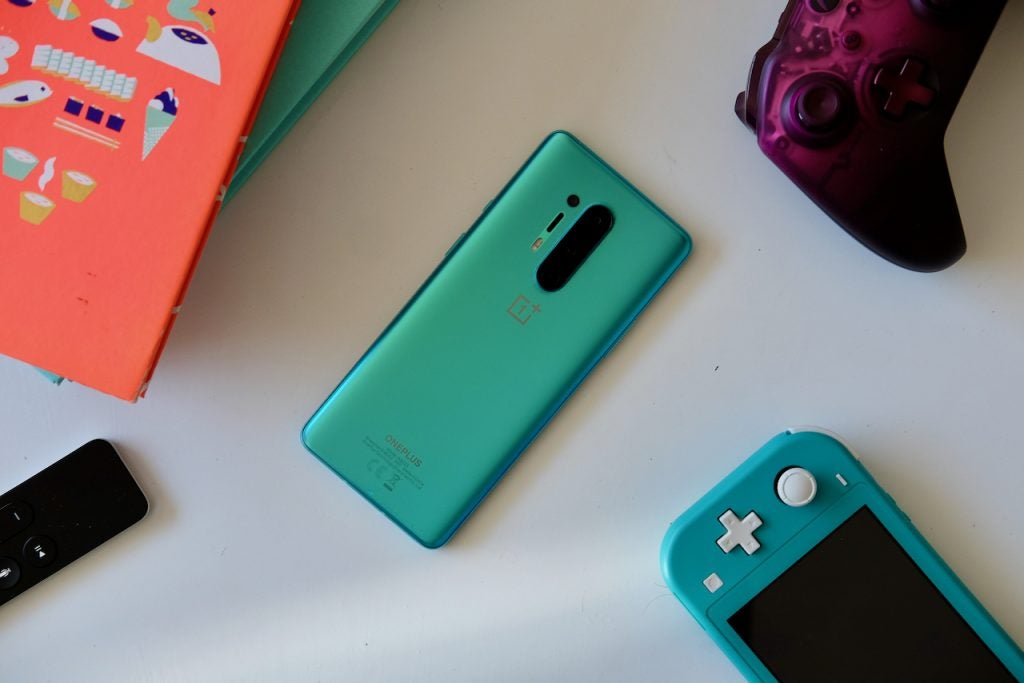
Even though OnePlus remains a relatively new company (even if they are part of BBK, a company that also owns Oppo) the fit and finish here is better than a lot of others. Everything from the USB-C port to the speaker grilles is machined with an impeccable finish. There’s no headphone jack, but that’s to be expected these days.
Performance – One again OnePlus builds a seriously fast Android
One thing you can always count on with a OnePlus phone is that it’ll come with all the latest internals and that’s certainly the case here. There’s a Snapdragon 865 complete with the X50 modem for 5G, 8 or 12GB of LPDDR5 RAM and either 128GB or 256GB storage. All the mod-cons really.
Pair that fast chipset with the 120Hz display and you’ve got a phone that’s a pleasure to use. Nothing lags; games are smooth and responsive, and the 5G support (on all models) is the icing on the cake. See below for some synthetic benchmark testing:
| Geekbench 5 dual-core | Geekbench 5 dual-core | AnTuTu | |
| Samsung Galaxy S20 | 919 | 2765 | 487,678 |
| OnePlus 8 Pro | 886 | 3309 | 485,675 |
| Huawei Mate 30 Pro | 749 | 2910 | 452,421 |
| iPhone 11 Pro | 1334 | 3552 | 558,778 |
| OnePlus 7T Pro | 745 | 2672 | 471,814 |
There are two SIM slots inside the phone, however, as usual, you will have to make do without any expandable storage. While both of these slots can be used with a 5G SIM, you can only use one of them for 5G data at a time. 5G does add cost, and without it being everywhere, yet there is always the thought that some people are paying for a feature they won’t be able to make use of. For a phone like this though, from a company that isn’t mainstream as Samsung or Apple, I think it makes sense to go 5G across the board.
The in-display fingerprint sensor remains the optical kind, so it’s far quicker than the one on the Galaxy S20, but it requires a lot of light to make it work. If you unlock your phone at night, the blinding burst of blue will certainly wake you up. There’s basic facial unlocking too, which works quickly but without the secure backing of the version you’ll have on the Huawei P40 Pro.
Battery life – Another 2020 flagship that varies wildly depending on how you use it
Giving an overall verdict on battery life is becoming increasingly difficult, as these phones with high-refresh displays vary so wildly depending on how you use them and what mode you have it in.
By default, my review unit was set to 120Hz at 1080p, and that’s smart as this will be what most should use. You can, of course, see a slightly crisper image at QHD+. However, the difference is only really perceptible if you’re looking for it.
At this setting, my endurance still varied a lot, and I can put a lot of that down to slightly different usage during the ‘lockdown’. I’m streaming more music over Bluetooth, but using less mobile data on the go. With 120Hz/1080p I got between 5-6 hours of screen-on time, dial that up to QHD+ and it was more like 4-5, and even as low as three I if properly utilised that bright display for a few TV episodes on Netflix.
The 4510mAh battery isn’t small, and there’s enough capacity here to stretch things out if you want to, though losing that silky 120Hz look is hard once you get used to it.
However quickly you deplete the cell, you’ll be able to get it back very quickly. There’s the Warp Charge 30 tech here that’ll give you 50% in around 20-25 minutes and a full charge in a bit over an hour. There’s also wireless charging at 30w if you’ve got one of the new OnePlus wireless chargers.
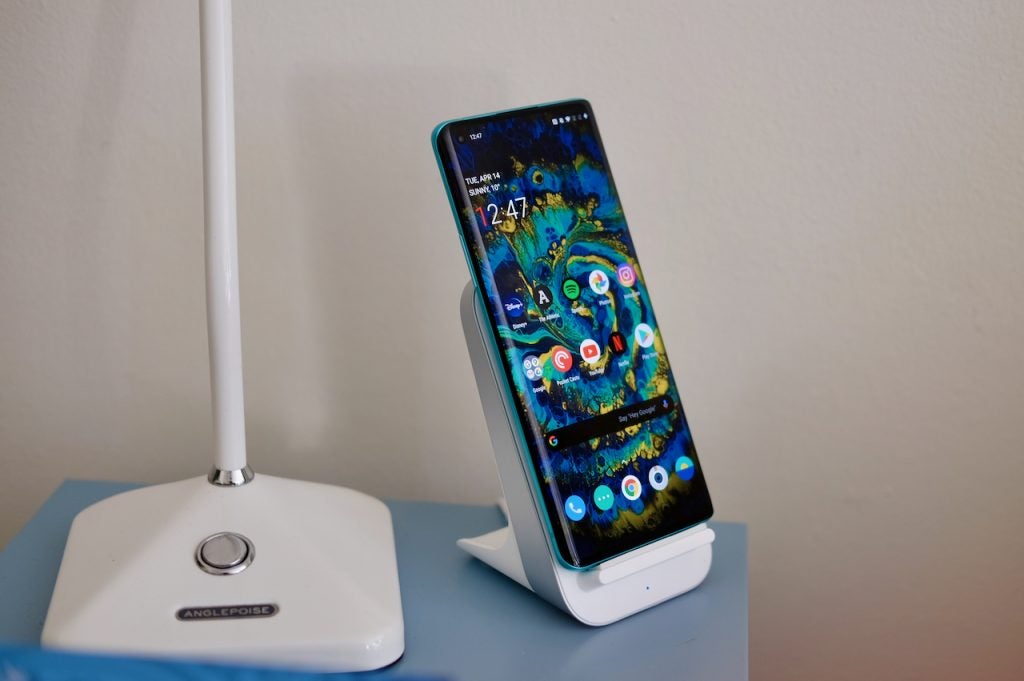
This will set you back £69, but it does charge at a similar rate to the wired option. It’s a nice looking charger too, with a sturdy body and vertical orientation. One annoying aspect is that the charging coils are too high up to charge certain Qi accessories, like AirPods.
A full charge on a regular wireless charger takes about 4 hours, which is pretty much standard these days.
Camera – Not the priority, but still gets the job done
I have been quite impressed with the camera on the OnePlus 8 Pro. It edges on the punchier, more saturated, side of images with skies looking particularly blue, but this does lead to pleasing shots that are captured quickly.
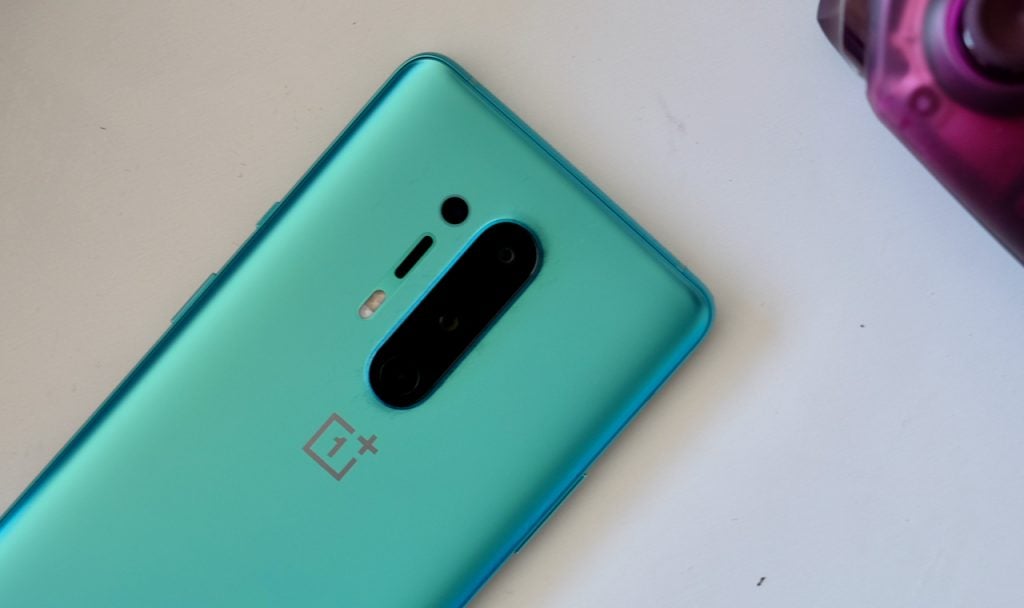
On the back you’ll find a main 48-megapixel sensor, which is the Sony IMX689, with an f/1.8 lens and OIS. This is paired with a second 48-megapixel sensor, this time for ultra-wide shots. While most phones seem to have that high megapixel secondary camera focussed on zoom, this OnePlus uses it for ultra-wide snaps instead, and these can look really good.
There is a zoom lens too, in the form of an 8-megapixel camera with OIS. There’s no form of periscope zooming though, a feature you’ll find on recent flagships like the Galaxy S20 Ultra, Oppo Find X2 Pro and Huawei P40 Pro. As a result, zoomed shots are ok if you’re jumping 3x; push it further though, and the snaps deteriorate quickly.
I’ve been a big fan of these recent zoom lenses on phones as it gives them a completely new use case that wasn’t available before. It’s a shame it’s missing here, though hardly a surprise as OnePlus has never been up there with the best when it comes to camera quality or tech.
But, of course, OnePlus still wants to be able to call this a ‘quad-camera’ phone, so it’s added a very odd 5-megapixel colour filter sensor on the back too. This takes snaps with chromatic colours that give them a look I do not like at all. Take a picture of some trees, and it makes everything look dead, almost like you’re wandering through a post-apocalyptic wasteland. It’s pure gimmick and goes against the idea OnePlus has pushed for years that it doesn’t just add features for the sake of it. As it’s only 5-megapixels the pictures also lack sharpness, with textures coming across quite muddy.

There’s enough quality in the ultra wide camera
Sharpness and detail isn’t an issue with the other cameras though, especially the two 48-megapixel sensors. Both of these can either take 12-megapixels shots (combining multiple pixels into one) or pure 48-megapixel shots. Sometimes shots can look a bit too oversharpened, especially if you’re shooting trees or flowers, but that’s a minor issue, and it actually makes for a more pleasing image when you’re looking at it through the phone’s screen.
The 8 Pro has a better, newer sensor than the OnePlus 8 and the difference does show. 4K (up to 60fps is supported) video shot on the Pro is a lot sharper and smoother, while low-light snaps retain more detail and don’t rely so much on brightness.
Pictures do lack the strong dynamic range of the recent Galaxy S20 phones and the Pixel 4, meaning shots with a lot of variation in colour aren’t as striking.

Colours are bright, even if it can make particularly sunny scenes a little unnatural

Zooming up to 3x is good, if not as strong as the pricier competition

Software – OnePlus Android remains the best Android
Google’s version of Android is often heralded as the finest form of the software. Yet the version you’ll find on a OnePlus device (OxygenOS 10.5) is just as good. It’s packed with nice customisations, yet it keeps a look that’s very similar to what you’ll find on a Google Pixel.
OnePlus has even slimmed down its additions to Android this time, removing the relatively useless Shelf and replacing it with Google’s own Discover panel – which might be equally useless depending on how you use it.

I like so many of the tweaks here, from altering the accent colours to turning certain apps greyscale to make them better on your eyes when reading. OnePlus knows when to add, and when to just leave stuff alone. For example, it knows Google’s own apps (Calendar, Mail etc.) are much better than ones it could make itself – so it doesn’t try. Samsung could learn a lesson here, as pick up an S20 device and you’ll find it jammed with apps that you’ll likely never use.
Should you buy the OnePlus 8 Pro?
The OnePlus 8 Pro doesn’t feel like a huge update over its predecessor, and I do hope the brand ditches its ‘T’ line this year and keeps this as the main phone until the OnePlus 9. Or focus on a different market, as Samsung does with its Note series.
While the overall update isn’t huge, this is an excellent Android phone with one of my favourite displays out there, software that might just be better than Googles and a very respectable camera. The addition of highly-requested features like Qi charging and an IP rating is also welcome, especially as OnePlus has held out against adding them for so long.
- These are the best Android phones
- Want an iPhone? We’ve rounded up the best iPhones
- And these are the best camera phones
To some, the OnePlus 8 Pro might lack that high-end standout feature. There isn’t anything here you can’t get elsewhere and OnePlus has decided against implementing things like impressive zoom. Yet it still remains cheaper than the Samsung Galaxy S20 Plus and Oppo’s Find X2 Pro by quite a large amount, and it makes this a perfect choice for someone who doesn’t want to blow £1000 on a phone.
I wish it was smaller; ditched the curved screen and was a little more comfortable to hold. But this still remains a great, big Android phone.
How we test phones
We test every mobile phone we review thoroughly. We use industry standard tests to compare features properly and we use the phone as our main device over the review period. We’ll always tell you what we find and we never, ever, accept money to review a product.


